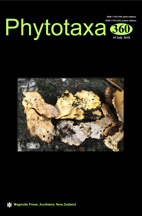Abstract
The status of the genus Dichodon has long been debated, and its taxonomic position in tribe Alsineae has been changed during the time from a section or subgenus in Cerastium to genus sister to Holosteum. This group comprises important members of wet meadows in alpine and subalpine vegetation of Europe, arctic regions, and SW-Asia plus one species known as a weed in N-America, and a further one occuring in mountains of Taiwan. In order to clarify the taxonomic questions concerning this group and its species delimitation, we constructed phylogenetic trees, selecting several species belonging to tribe Alsineae as representatives of major lineages of this tribe as well as several accessions of Dichodon. Morphological studies focused more intensively on members of Dichodon using herbarium specimens and direct field examinations. The results confirm those of recent molecular phylogenetic studies, indicating Dichodon as a monophyletic genus sister to Holosteum and not Cerastium. In addition, the obtained cladograms support five distinct groups in Dichodon corresponding to five species of this genus we recognize in Iran, the focal area of this study. Seed micromorphology provides strong support for the recognition of Dichodon as a separate genus, but it is not informative at species and subspecies ranks due to constancy of most of seed characters within the genus. As part of this study, a new species—Dichodon alborzensis—is described, D. kotschyi is reported in Iran for the first time, and Cerastium schischkinii is placed in synonymy (new synonymy) under D. kotschyi.

